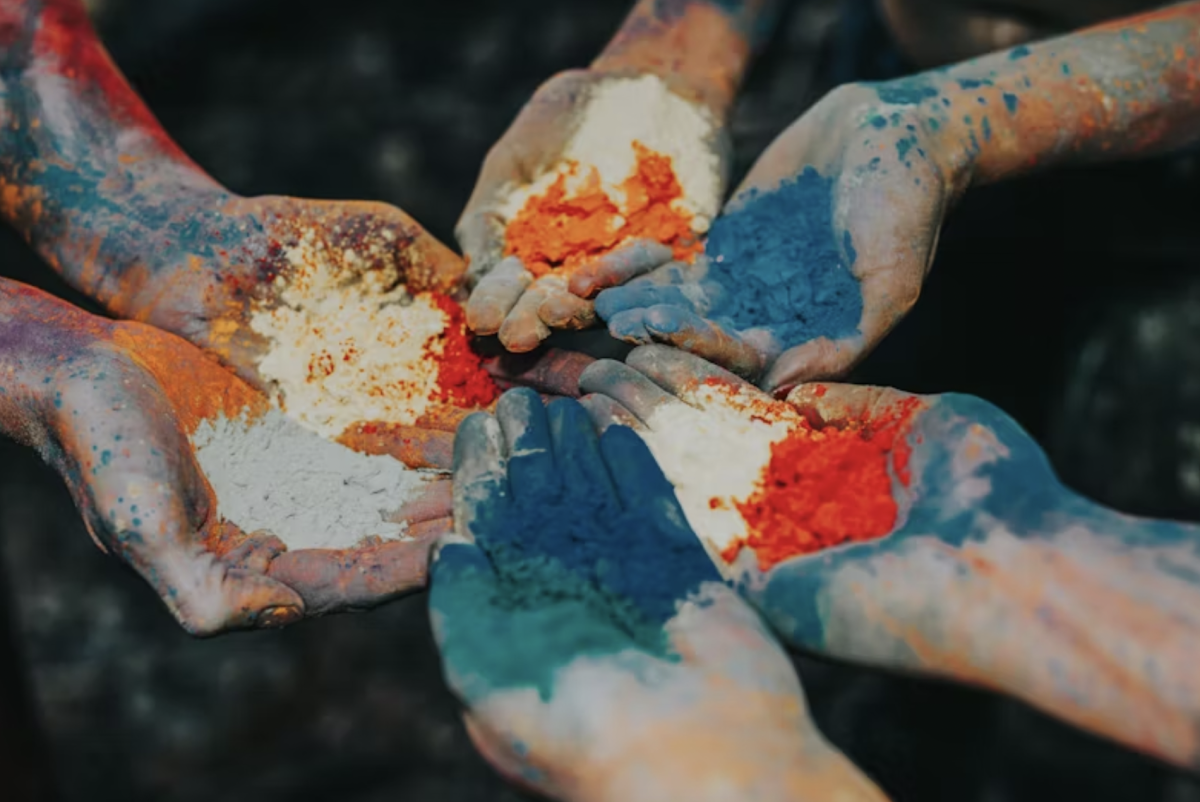The Holi Festival, or festival of colors, is a fascinating cultural and religious celebration that encompasses much more than just throwing colored dye in the air. Holi is a Hindu festival that has been celebrated since ancient times. The Holi Festival is celebrated as a way to welcome in spring, and also is seen as a new beginning where people can release all their inhibitions and start fresh.
It is said that during the Holi Festival, the gods turn a blind eye, and it’s one of the few times extremely devout Hindus allow themselves to let loose. They open up and enjoy each other’s company, take time to dance and party, and throw their cultural norms to the side.
On the first day of the festival, a bonfire is lit to symbolically burn away all the bad and give way to a colorful and vibrant new future. At the Holi Festival, participants throw powder dye into the air, covering all in attendance with vibrant colors. In a religious sense, the colors are rich with symbolism and have multiple meanings: they can mean a vibrant new life and even represent sin in a way. For some, washing off the dye at the end of the day can mean new commitment to live well, as cleansing oneself of evils and demons.
Why is Holi Celebrated
The Holi Festival is primarily celebrated by Hindus. That said, the festival is very inclusive, as one of the main themes of the festival is unity. So, while the Holi Festival is rooted in Hindu tradition, it is a celebration that happens all over the world. It brings people together and invites them to throw away their inhibitions, feeling united in one big colorful group.

It’s said that the Holi Festival was originally a ceremony for married women to spread prosperity and goodwill to their new family. Since then, the festival has evolved to encompass much more. Now, one of the main focuses of the Holi Festival is a celebration of the victory of good over evil. Good overcoming evil in Hinduism is rooted in the story of Hiranyakashipu. He was an ancient king who claimed to be immortal and demanded to be worshiped as a god. His son Prahlad was deeply devoted to worshiping the Hindu deity Vishnu, and Hiranyakashipu was angry that his son worshiped this god over him. According to the story, Lord Vishnu appeared as half-lion and half-man, and killed Hiranyakashipu. In that way, good conquered evil.
Another story tied to the Holi Festival is that of Radha and Krishna. As the eighth incarnation of the Hindu god Vishnu, Krishna is seen by many as the supreme god. Krishna is said to have blue skin because as legend has it, he drank poisonous milk from a demon when he was a baby. Krishna fell in love with the goddess Radha, but feared she would not love him because of his blue skin – but Radha allowed Krishna to dye her skin with color, making them a true couple. On Holi, Festival participants apply color to each other’s skin in honor of Krishna and Radha.
How is Holi Celebrated
The second day of Holi is the main celebration. Traditionally, in states such as Rajasthan, water would have been scented and dyed with flower petals, but these days, commercially-prepared colors are used. Early risers will line up colors and arrange snacks on platters, while children fill ‘pichkaris ‘(water pistols) ready for action. The morning starts with an outdoor exchange of sweetmeats and powdered colors. This may involve an elegant light touch of color on foreheads in some households, while at the other end of the scale, a full-on soaking with a bucket of coloured water sets the tone for the day ahead!
After a couple of hours of drinking and snacking, the kitchen swings into action, with a satisfying lunch. A lull follows, and revelers bathe and change into clean and neatly ironed clothes. This signifies the end of exuberant Holi activities, and stern words will be exchanged if anyone chucks color after this time
The main event is the color-filled celebration. While the bonfire on the night before, Holika Dahan, has a religious element, the day of the color fest typically doesn’t involve a religious ceremony. It’s purely about having fun within your community by taking to the streets or attending private celebrations to throw colors at each other. The colors are each said to symbolize something different. Blue is for Krishna, a Hindu god portrayed with blue skin. Green is symbolic of rebirth and new beginnings. Red is the color of marriage and can symbolize matrimony or fertility. Yellow, the color of turmeric, is often used on auspicious occasions.







